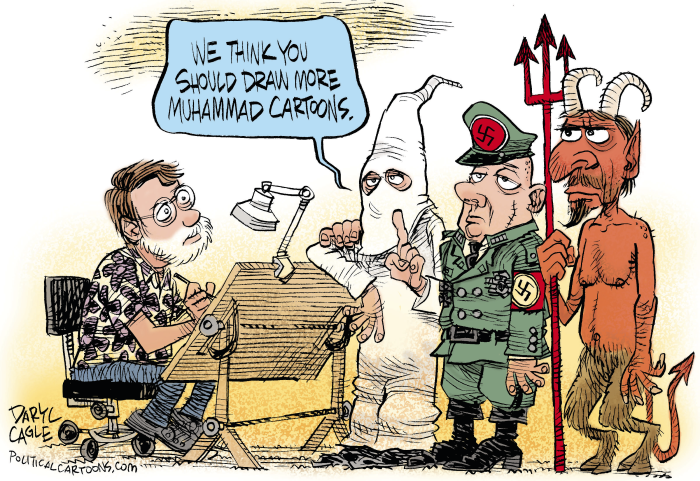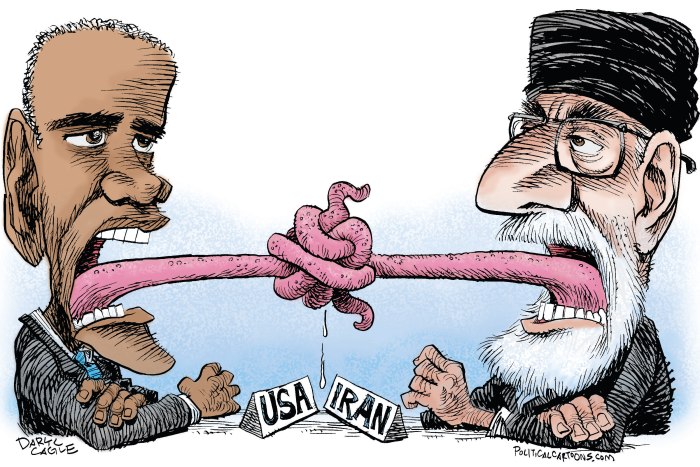Ukrainian cartoonist Vladimir Kazanevky may have won more awards than any other cartoonist; he is one of the kings of the international cartoon competitions. Vlad, an occasional contributor to Cagle.com, has written his take on the issues facing editorial cartoonists today from his unique place in the cartooning world. See Vlad’s archive here.
——————
By Vladimir Kazanevsky
The art of cartoon is directly related to the current life. One way or another, in his work the cartoonist willingly or unwillingly is tied to the expectations of the public. After the terrorist attack on the editorial office of weekly Charlie Hebdo, when four cartoonists were killed for their drawings the world community paid special attention to the art of cartoon. Each cartoonist began to treat his seemingly harmless creations with greater responsibility. Subconsciously, every cartoonist began to understand that cartoons are not only funny naive drawings, but potentially serious weapons. The cartoonist began to take social and censorship restrictions seriously. Most importantly he began to paid close attention to self-censorship. The cartoonist wondered how free he was in his work. Of course, you can draw without showing your creations to anyone. In this case, the artist is absolutely free. He may throw out his emotions, dreams, secret desires on paper. But the work of a cartoonist presupposes publicity. Can a cartoonist who shows his creations widely be free in creation? What is free creativity? Do boundaries exist and, if they are, by what or by who are they determined? Let’s try to answer these questions.

It’s easy to talk about limiting creativity. For example, a cartoon is a strict order. In this case, the cartoonist depends on the wishes of the customer, his tastes and views. Also, the authorities or the owners of the media often prohibit the publication of sharp cartoons that do not please them. With the limitations of creativity from the outside everything is clear. But is there absolute freedom of public creativity? Is there a limit to the freedom of creativity for public? Philosophers have written a lot and fruitfully about freedom of the individual at all times. Let us recall here only the expression of Benedict de Spinoza: “Freedom is a realized necessity.” How does this expression apply to the creative freedom of cartoonists?
The whole world was shocked by the news on January 7, 2015 of the shooting by terrorists of cartoonists and journalists in the editorial office of the weekly Charlie Hebdo. Moreover, the artists were summoned by terrorists according to the list. This means that the terrorists, or those who sent them, severely punished the cartoonists precisely for their work. Artists paid the highest price for their free thinking. This bloody brutal act and the subsequent terrorist attacks caused deep indignation of people around the world.

The weekly Charlie Hebdo continued to fiercely advocate the free work of journalists and cartoonists without borders and taboos, upholding the long tradition of the French in the pursuit of freedom. Outrageous cartoons have appeared and appear in each new issue of the publication. “As one of the former editors of Charlie Hebdo said, a cartoon should be a slap in the face,” said the French cartoonist Rodo. Is this position of speculative engagement of readers to increase circulation, or is it a true pursuit of creative freedom? Let’s try to answer this question together with famous cartoonists from different countries.
Let us take conditionally the drawings by the artists of Charlie Hebdo as the starting point for the free-thinking of cartoonists, because the artists of this weekly strive for free creativity without borders and taboos. But first, let’s get acquainted with the humor and satire that the artists of the weekly presented to the readers. Much has been written and talked about cartoons of the Prophet Muhammad associated with the terrorist attacks. Basically, all judgments boiled down to the questions: is the humorous image of the prophet offensive for believers; does Islam prohibiting any graphic images of Muhammad? The mass media actively condemned the terrorists, discussed the violation of religious taboos by cartoonists. The artists of Charlie Hebdo brushed aside such taboos without embarrassment, using sexual motives and techniques of black humor. Let us not forget that the freedom of creativity of satirists presupposes freedom of criticism of all social manifestations. Almost all of the cartoons published in weekly are saturated with caustic satire, their humor is quite specific, saturated with black humor. Cartoonists quite often criticized politicians from different countries of the highest ranks up to presidents and other famous personalities in the world.

An attempt to release a version of Charlie Hebdo in Ukraine was unsuccessful. Editor tried to instill in Ukraine, a taste for satire, which is a manifestation of creative freedom without borders and taboos as in France. The Germans tried to follow the same path. The German version of the weekly Charlie Hebdo was published for a whole year. However, the German magazine did not reach the planned circulation of 10,000 copies and was closed.
The freedom of creativity that the artists of Charlie Hebdo demonstrate causes a lot of controversy. Famous cartoonists from different countries expressed their opinion in the TV program “Ironic Commentary with Vladimir Kazanevsky” on the i-ua.tv channel, 2021(https://i-ua.tv/programs/ironichnyi-komentar-volodymyra-kazanevskoho/27391-chy-isnuie-mezha-svobody-tvorchosti-karykaturystiv).There are laudatory responses; there are also violent criticisms of the semantic premises and artistic incarnations of the cartoons published in the weekly. It was interesting to know the opinion of the cartoonists from different countries about Charlie Hebdo. French cartoonist Bernard Bouton said: “I am against all forms of censorship. You can laugh at everything. You MUST laugh at everything! A sense of humor helps you laugh at sad events.
We still have self-censorship. There are two types of self-censorship. The cartoonist may have practiced self-censorship for fear of losing his job or even his life. Or he uses self-censorship to avoid shocking his readers in case his cartoon is misinterpreted. Each cartoonist asks these questions and each of us must choose the appropriate level of self-censorship” [2]. He was supported by Russian Denis Lopatin: “Charlie is the vanguard, the cutting edge, the outpost of civilization. I admire their courage. Well done. Always or not always, I may agree or disagree with their opinion. These are the bravest cartoonists at the moment. They are always on the edge of the struggle between civilization and barbarism for freedom of speech” [2]. Bulgarian artist Ivailo Tsvetkov speaks quite differently of the Charlie Hebdo cartoonists: “They (the Charlie Hebdo artists) made a business, they are deliberately looking for a scandal with their publications. Big scandal, big circulation, big buzz, more money and more profit. This freedom and courage are not entirely selfless” [2]. Constantin Sunnerberg from Belgium also expressed his opinion: “I never particularly liked Charlie Hebdo. Apparently because of a certain vulgarity, however, intentional, which does not suit me. But, of course, Charlie Hebdo has the right to do and paint what he wants and how he wants. Whoever doesn’t like it let him not look.
Unfortunately, when religion leaves the realm of individual faith and becomes politics, it always leads to the worst. Centuries of unfortunate experiences have passed in this regard. To kill for a drawing, often even misunderstood, is an excellent proof that if a person was created by God, it was an unsuccessful attempt ”[2]. Turkish cartoonist Eray Özbek calls for tolerance: “The cartoonist, criticizing the tyrant, resorts to self-criticism. I mean, he limits his freedom, because is necessary not to sacrifice oneself, but to be able to continue to fight … If our goal is to attract people with different points of view, then we must definitely approach them with sympathy ”[2]. Thus, some artists support the desire of colleagues from the weekly Charlie Hebdo for freedom of creativity without boundaries, others reject with indignation.

In order to understand how cartoonists from different parts of the world relate to the work of artists Charlie Hebdo, a wide survey was conducted on condition of anonymity. The cartoonists were asked to answer one question: “Do you support freedom of speech without taboos as suggested by the cartoonists of the satirical weekly Charlie Hebdo?” Answers were supposed to be short: “yes”, “no” or “find it difficult to answer.” 178 cartoonists from 52 countries agreed to take part in the survey. 17% of cartoonists found it difficult to answer, mark “no” (did not support) – 23% of cartoonists, 60% of cartoonists mark “yes” (supported). Of course, there is no need to talk about a statistically reliable survey, but general trends are easily traced. Most of the cartoonists supported free creativity without borders and the taboos of the Charlie Hebdo artists. It can be assumed that most of the artists have only heard about the scandalous cartoons of the Prophet Muhammad published in Charlie Hebdo, but are not very familiar with the cartoons of this publication. In this regard, we have analyzed the survey carried out by geography.
95% of cartoonists in Americans countries (Brazil, Cuba, Colombia, Mexico, Nicaragua, Argentina, Canada and USA) supported colleagues from Charlie Hebdo, one Mexican answered “no”. This result is somewhat predictable, because in most countries of this continent the Christian religion dominates, whose parishioners and clergy are tolerant of the art of cartoon.
Similarly, the results of the survey in 26 European countries turned out to be predictable. 65% of cartoonists supported colleagues from Charlie Hebdo, 20% found it difficult to answer and 15% answered “no”.
Somewhat unpredictable results were shown by the results of a survey of artists from Asia. Chinese artists are divided. Half of them answered “yes”, half – “no”. 66% of the surveyed Indians cartoonists supported their colleagues from Charlie Hebdo, 34% of them did not. 82% cartoonists from Indonesia answered categorically “no”, 18% of them found it difficult to answer. 67% of Turkish cartoonists answered “no”, 33% answered “yes”. An unexpected result was shown by a survey of Iranian artists. The majority, 49% supported the free creativity proposed by the cartoonists of Charlie Hebdo, 31% found it difficult to answer and only 20% answered “no”.
Thus, according to the survey, there is a tendency towards the manifestation of creative freedom of cartoonists all over the world, regardless of political, religious and social prohibitions and taboos. Self-censorship of a cartoonist sets the boundaries of personal freedom of creativity and determines the degree of the artist’s conformism. Each of the artists for himself establishes his own ethical and aesthetic attitude to the well-established conventions, prejudices and prohibitions. If terrorists react to cartoons committing bloody violence against artists, this is a manifestation of the disease of society devoid of tolerance. The cartoonists by own free creation are fighting against these disease of society.
Illustrations by Vladimir Kazanevsky
Want to get EVERY new CagleCartoon from our 62 syndicated newspaper editorial cartoonists, in your email box every day? Just become a Cagle.com HERO and you get the exclusive daily emails of ALL THE CARTOONS! See all the cartoons before the newspapers print them and never miss a cartoon!
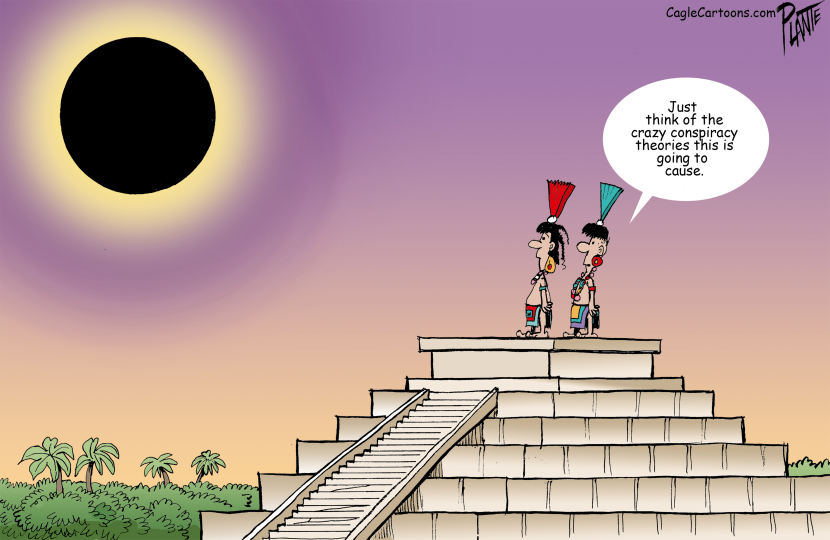
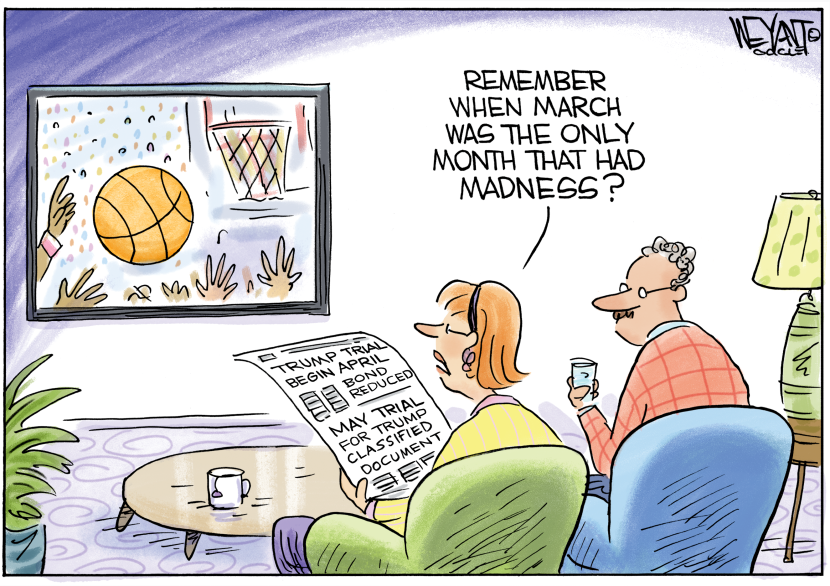

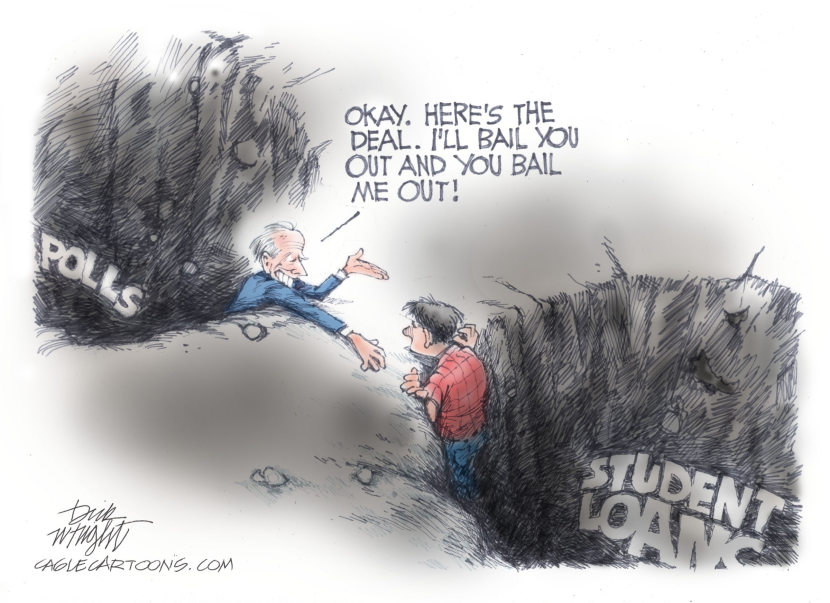
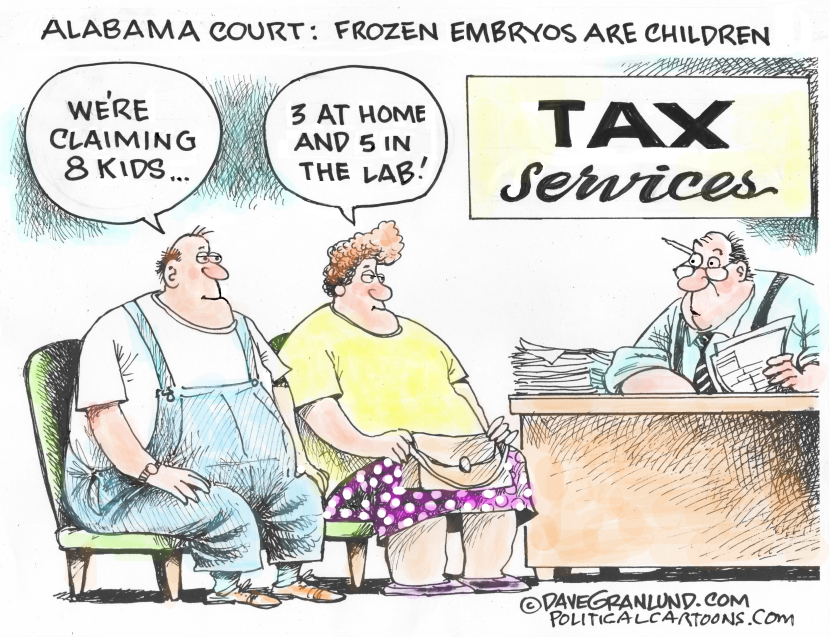
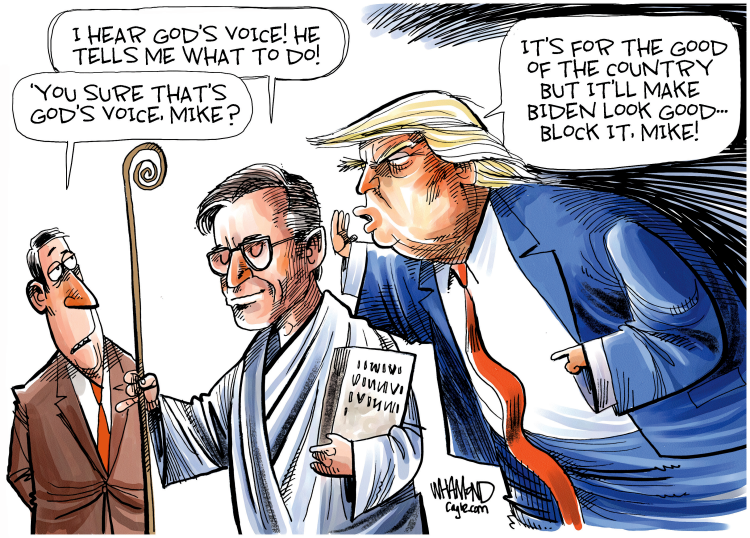
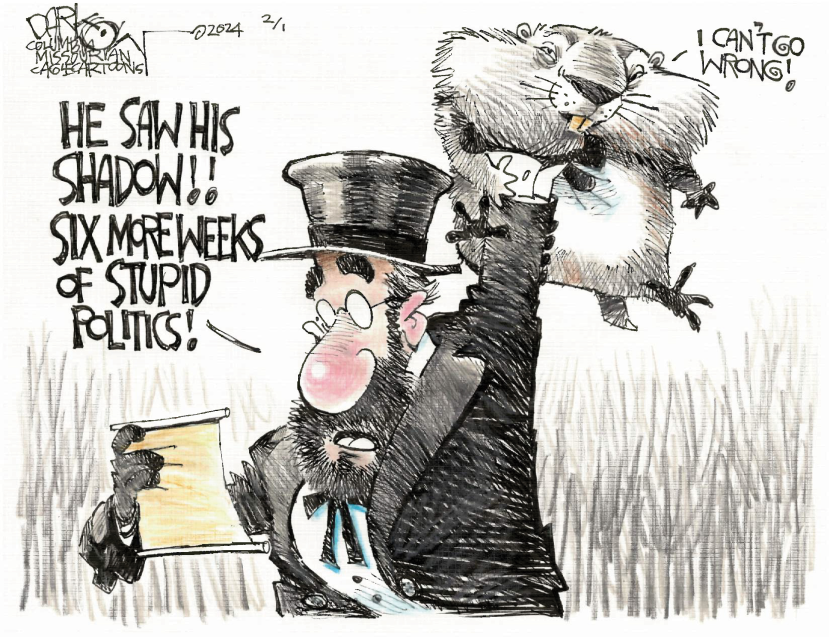
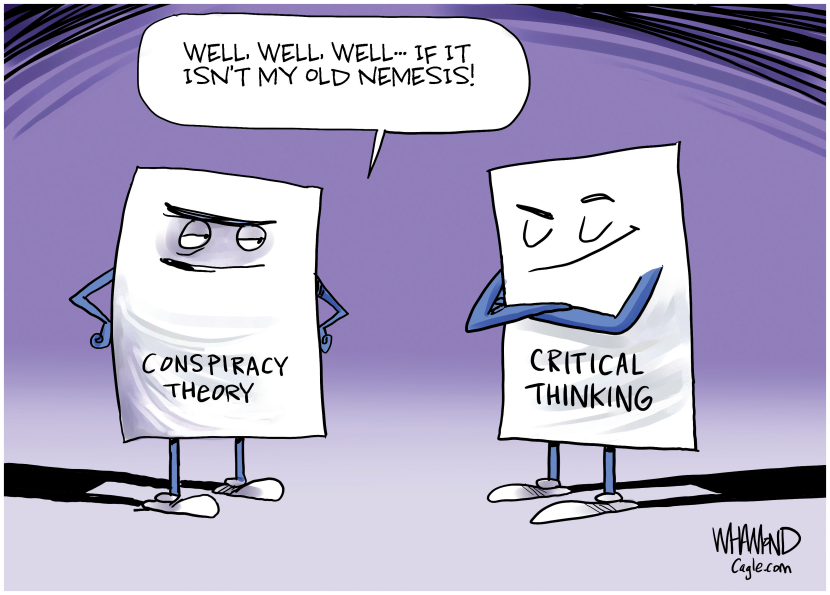
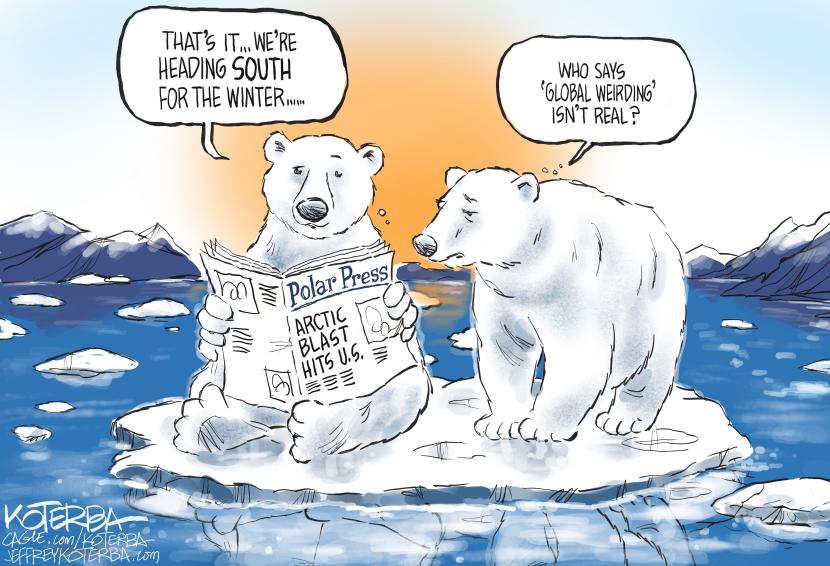

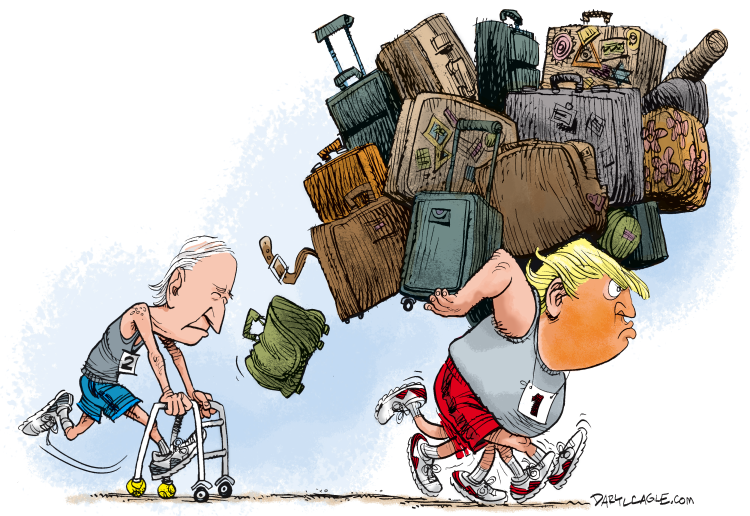


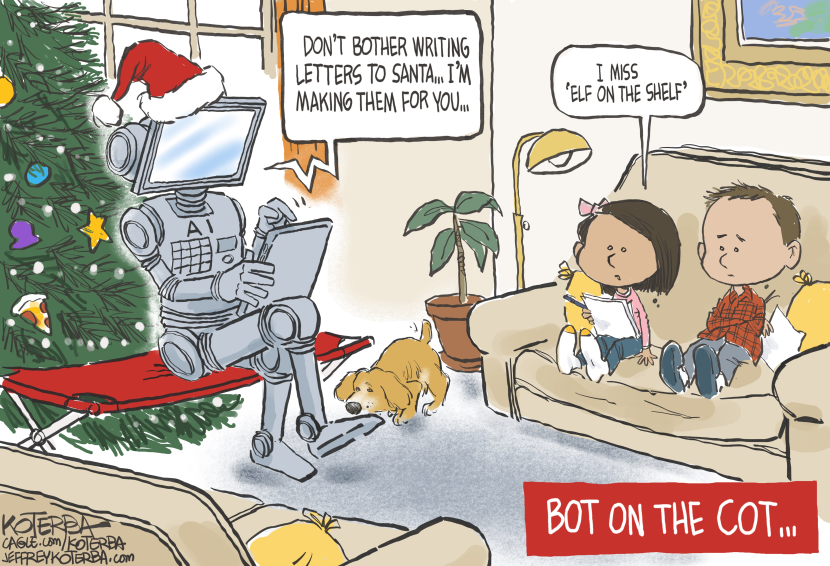
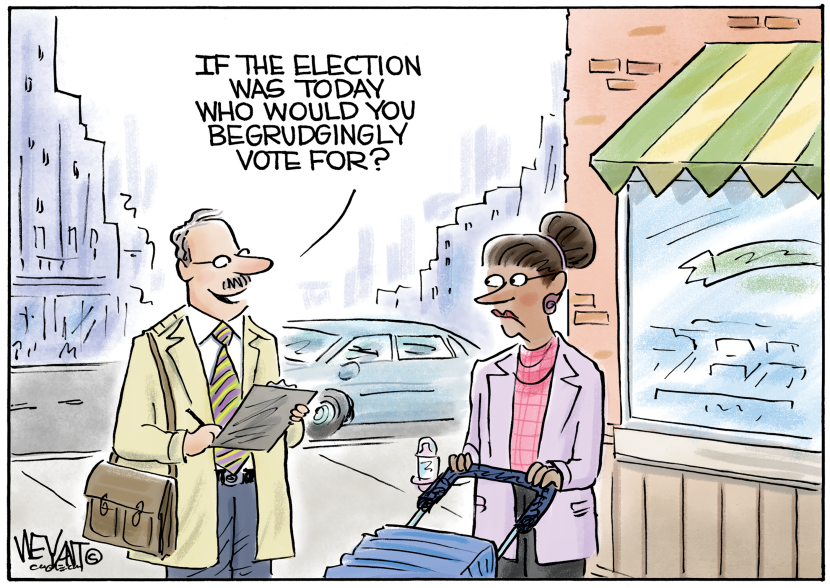

































 ear …,
ear …, Cartoonists want readers to correctly understand their cartoons. Cartoons that are misunderstood are ineffective cartoons. Cartoonists are in the business of communicating their ideas. There is nothing we can do to insure that readers correctly interpret our cartoons, except to strive to draw good cartoons. I don’t think of “flags” as something to interpret, except that I generally understand that American readers don’t recognize the flags of other countries. Worldwide cartoonists typically use flags to represent countries more often than American cartoonists
Cartoonists want readers to correctly understand their cartoons. Cartoons that are misunderstood are ineffective cartoons. Cartoonists are in the business of communicating their ideas. There is nothing we can do to insure that readers correctly interpret our cartoons, except to strive to draw good cartoons. I don’t think of “flags” as something to interpret, except that I generally understand that American readers don’t recognize the flags of other countries. Worldwide cartoonists typically use flags to represent countries more often than American cartoonists








